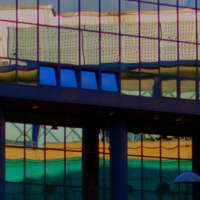 DISCUSSION: John Dante Prevedini leads a discussion about Music and the Visual World, including contributions from Celia Craig, Halida Dinova and Yekaterina Lebedeva.
DISCUSSION: John Dante Prevedini leads a discussion about Music and the Visual World, including contributions from Celia Craig, Halida Dinova and Yekaterina Lebedeva.
A Half-Successful Experiment
Teatro Comunale di Bologna's new production of Cilea's 'Adriana Lecouvreur', reviewed by GIUSEPPE PENNISI
On the evening of 10 March 2021, the new staging of Adriana Lecouvreur by Francesco Cilea was seen on RAI5. It was produced by the Teatro Comunale di Bologna together with Rai Cultura and recorded behind closed doors at the beginning of February. Following the first viewing on Wednesday 10 March, the work can now be seen on RaiPlay. There was a lot of anticipation for this staging in a film-opera version signed by Rosetta Cucchi, directed by Asher Fisch and shot entirely inside Bibiena Hall and in its foyers and corridors. The stage director Rosetta Cucchi is artistic director of Wexford Festival Opera which, with her guidance, has taken on a great international importance.
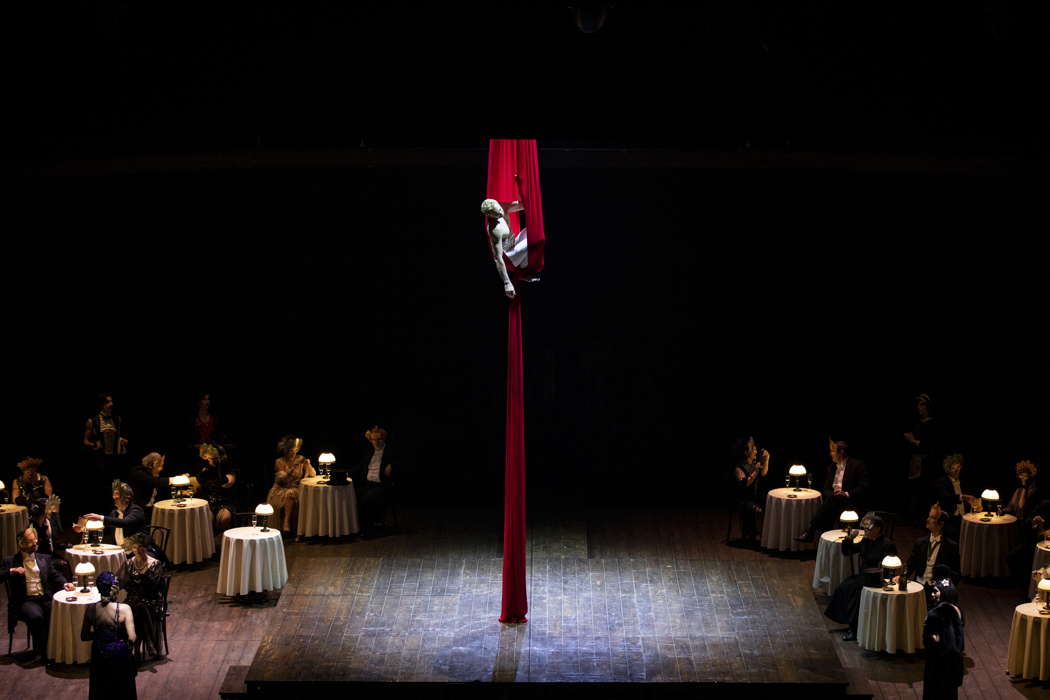
Acrobat Davide Riminucci in Rosetta Cucchi's new production of 'Adriana Lecouvreur' for Teatro Comunale di Bologna. Photo © 2021 Andrea Ranzi
The production, originally scheduled for last May but suspended due to the health emergency, opens the Bologna Opera House 2021 opera season in an unprecedented way with a production designed and conceived for television audiences, as already done, for example, by Teatro dell'Opera di Roma and Teatro Massimo in Palermo. Scenes, costumes and lights are signed respectively by Tiziano Santi, Claudia Pernigotti and Daniele Naldi, with choreography by Luisa Baldinetti and videos by Roberto Recchia. As usual, the chorus has been prepared by Alberto Malazzi.
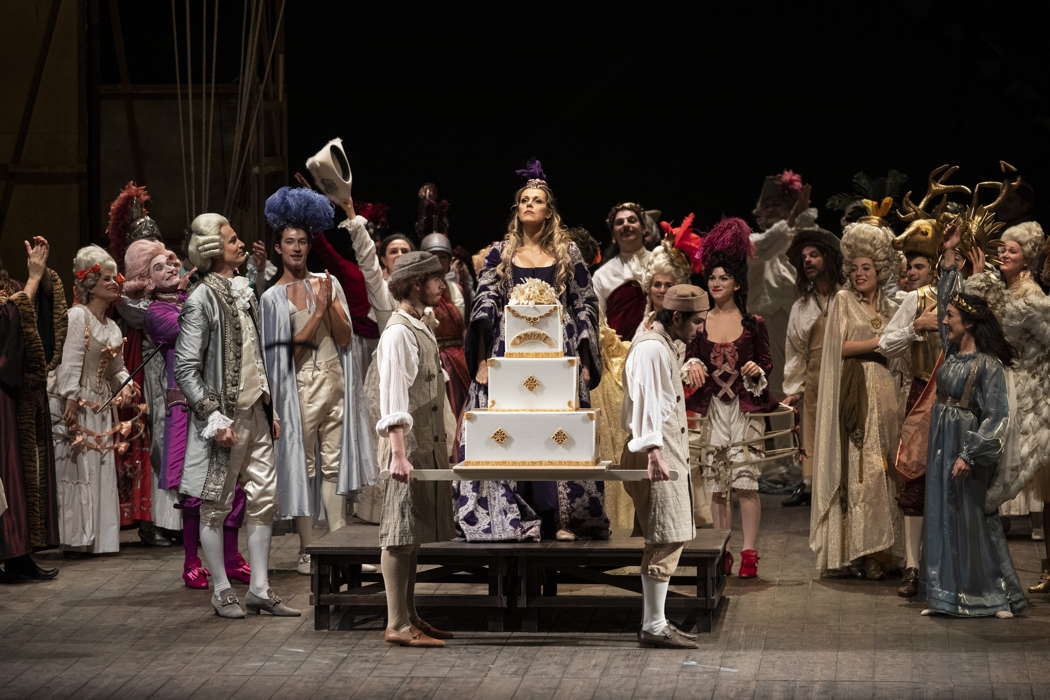
A scene from Act I of Rosetta Cucchi's new production of Adriana Lecouvreur for Teatro Comunale di Bologna. Photo © 2021 Andrea Ranzi
The opera's four acts become four scenes from different eras. Adriana Lecouvreur, as presented in history and legend, is in the first chapter of the story developed backstage in a theatre during the first half of the eighteenth century. In the second act, we jump to the nineteenth century, where the story is tinted with more romantic tones. Adriana is ideally a Sarah Bernhardt, one of the actresses who most played this role in the Legouvé and Scribe tragedy. In the third act, we arrive at the roaring twenties of the last century, where cinema enters society and feelings become filtered by a camera. There are many inspiring muses of that period: from Yvonne Printemps, protagonist of one of the first silent films inspired by Lecouvreur, to Greta Garbo or Loie Fuller. In the last chapter, we are in 1968 in a Paris dominated by La Nouvelle Vague: a sort of intimate diary of a new but restless generation where the protagonist could be inspired by Anna Karina or Catherine Deneuve as in a Godard movie.
The idea is, without any doubt, interesting, but it is implemented in a more theatrical than cinematic way. The action takes place between stage, boxes, foyers and corridors but has little cinema or television in its approach. The orchestra occupies the entire stalls section, but we never see it. The score, which is not without its merits, becomes the soundtrack of a mélo without ever seeing either Asher Fisch or the instrumentalists.
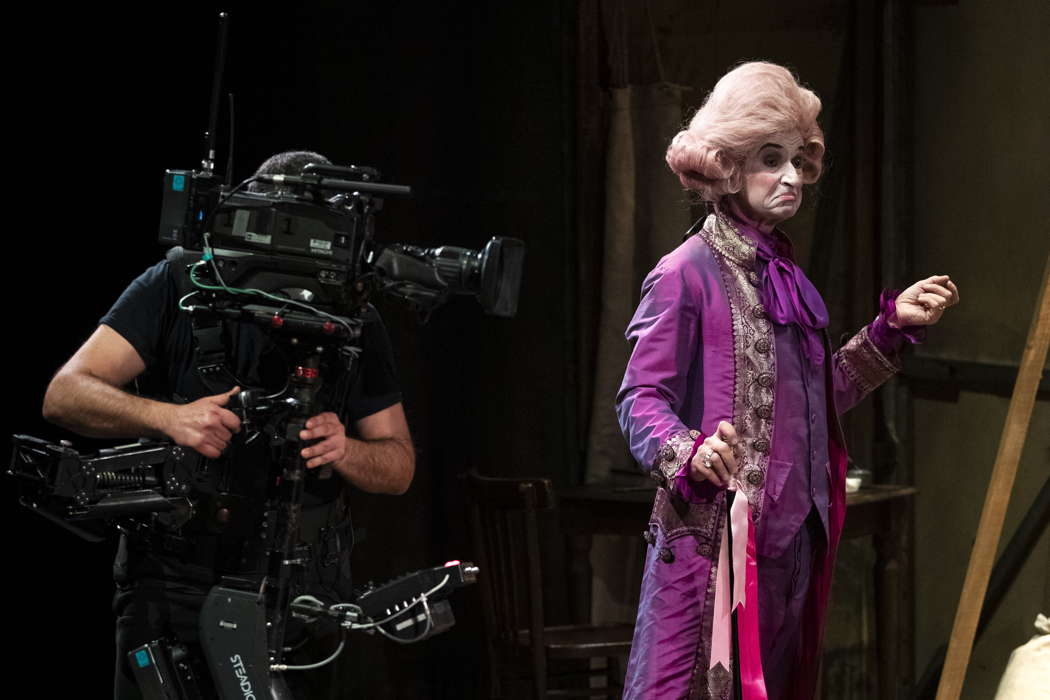
Filming Rosetta Cucchi's new production of Adriana Lecouvreur for Teatro Comunale di Bologna. Photo © 2021 Andrea Ranzi
Adriana Lecouvreur had its debut at the Teatro Lirico in Milan on 6 November 1902. Cilea and librettist Arturo Colautti took the subject from the play Adrienne Lecouvreur by Eugène Scribe and Ernest Legouvé, who in turn were inspired by the historical figure of Adrienne Couvreur, a famous French theatrical actress who, in the eighteenth century, revolutionized acting in search of a more natural expressiveness. In the opera plot, Adriana Lecouvreur and the Princess of Boullion compete for the affections (and bed) of the young Maurice, Prince of Saxony, and aspiring to the throne of Poland. In an eighteenth-century amoral intrigue of alcove and politics - on the main plot are inserted a couple of secondary stories, related to the love of the director of the 'Comedies' Michonnet for Adriana and to the Prince of Bouillon and his lovers - the Princess poisons her rival, out of jealousy.
The 1902 debut was a great public success. Improperly considered part of the 'musical verismo', it is close to Massenet's opéra lyrique and, above all, to the 'Po valley grand opéra'. This style had some success between the late nineteenth and early twentieth centuries but only a few operas - for example La Gioconda by Amilcare Ponchielli - are staged now. The pathetic drama of the central story is set in the context of a lush setting with the use of period music and instruments, as well as of ballet. The whole thing is suffused with an elegant and decadent lyricism, both in the vocal and orchestral writing, re-evaluated in recent years by conductors such as Sfefano Ranzani. Although the four protagonists have importance, this is an opera for first ladies, whose name is linked to Magna Oliviero, Renata Tebaldi, Antonietta Stella and Monserrat Caballé and, in recent times, to Renata Scotto, Raina Kabaivanska and Mirella Freni. It requires a lyric texture together with great acting.
I remember an excellent production in which the two protagonists were Renata Scotto and Fiorenza Cossotto. The vocality for Maurice of Saxony had been tailor-made for Enrico Caruso, the protagonist at the Milan debut and three years later in New York. In the history of the Teatro Comunale di Bologna, the heroine's tragic story was staged with great performers of the twentieth century in the title role: Magda Olivero in 1956, Raina Kabaivanska in 1982 and Mirella Freni in 1988 and 1993.
In this production, Latvian soprano Kristine Opolais takes the title role. Her deuteragonist is the mezzo Veronica Simeoni. These two artists have been reviewed several times on this magazine. It is difficult to comment on the voices in a broadcast via television. I would have preferred a more dramatic Adriana with a thicker voice and a more treacherous Princess, ie with darker tones.
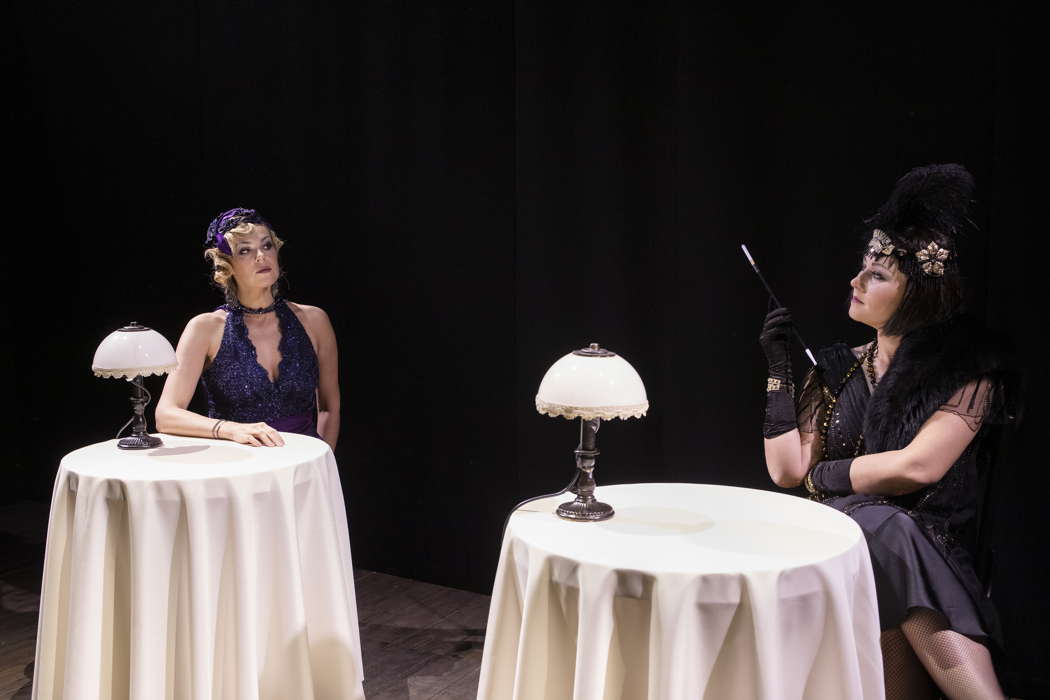
Kristine Opolais as Adriana with Veronica Simeoni as the Princess de Bouillon in Act III of Adriana Lecouvreur at Teatro Comunale di Bologna. Photo © 2021 Andrea Ranzi
Luciano Ganci is a good Maurice of Saxony with a solid center register. Nicola Alaimo as Michonnet is excellent, also as an actor. The vocal team is completed by Romano Dal Zovo (Prince of Bouillon), Gianluca Sorrentino (The Abbot of Chazeuil), Elena Borin (Mlle Jouvenot), Aloisa Aisemberg (Mlle Dangeville), Luca Gallo (Quinault) and Stefano Consolini (Poisson).
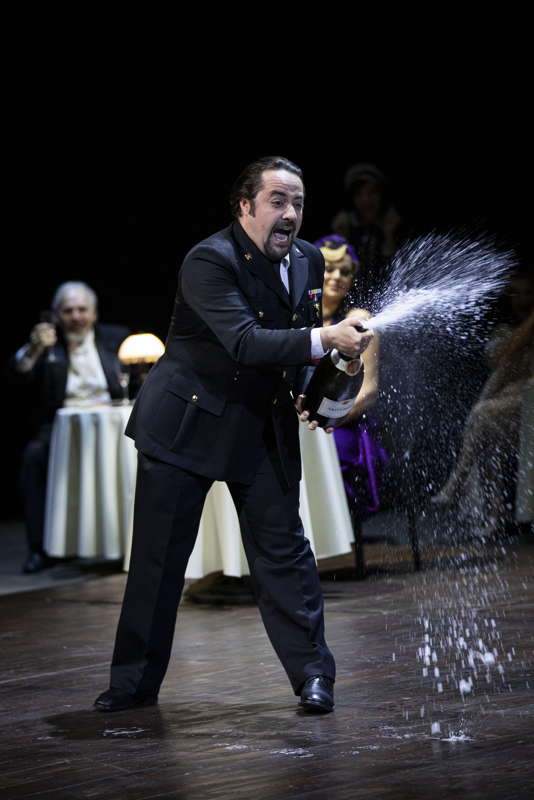
Luciano Ganci as Maurice of Saxony in the Bologna production of Adriana Lecouvreur. Photo © 2021 Andrea Ranzi
In short, this was a half-successful experiment.
Copyright © 12 March 2021
Giuseppe Pennisi,
Rome, Italy



